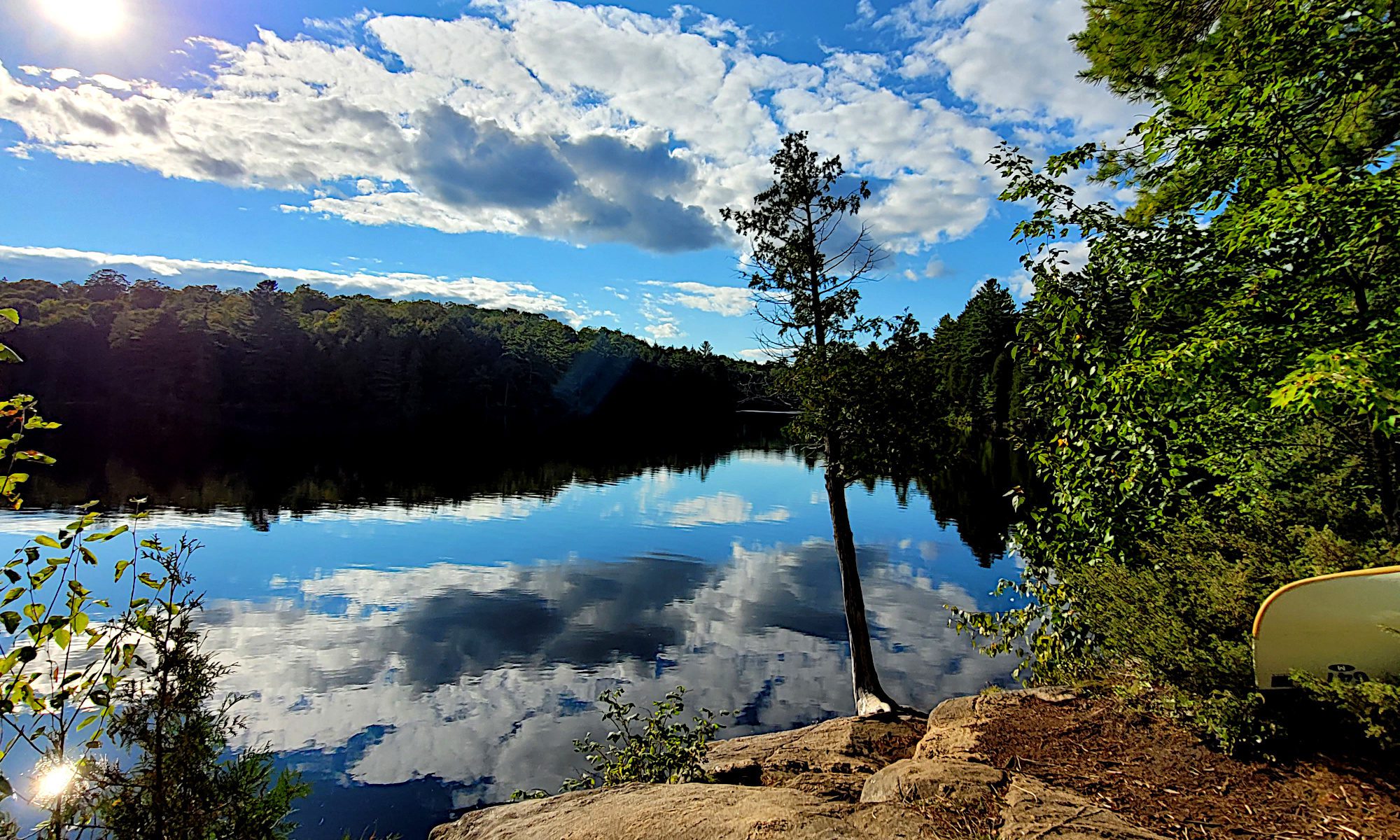A friend came to visit us at the lake recently, and they wanted to go and see a nearby “ghost town” called Balaclava. I had never heard of it before, but it turned out to be just a short drive from our place. So we headed off to Scotch Bush road near Dacre and there it was — not technically a ghost town, I don’t think, since there are still people living there. But it does have a great old abandoned lumber mill that dates back to the 1850s or so (although much of it was apparently destroyed by fire and rebuilt in the 1930s).

Behind the lumber mill is a tall, rusted tower that sits on a foundation of river rocks, with the remains of a wooden chute leading to the mill. This was apparently the first sawdust furnace in Ontario, and it was reportedly built because the owner of a grist mill down the river from the Balaclava mill sued the owner in 1911, claiming the sawdust being dumped into the river was fouling up his grist works. According to some reports, this was also the first environmental lawsuit in Ontario.
After visiting Balaclava, we had a little time on our hands, so I looked at a map of “abandoned places” nearby and found about half a dozen within an hour’s drive, including the ghost towns of Woermke, Vanbrugh, and Foymount — the latter of which is an abandoned former Air Force radar installation. But the closest one was a place called Newfoundout, which looked to be just off the Opeongo Road.
As it turned out, it was about six kilometres up a winding, narrow, dirt road with a lot of rocks and washed out sections, but we persevered and eventually we came to the ruins of a couple of old cabins, almost completely overgrown with weeds. They are all that remains of the community of Newfoundout, which started out with 13 families, all of whom were convinced to try homesteading on the land by the Public Land Act of 1853.

The Act, which was designed to attract settlers to Ontario, said: “One hundred acres will be given free to any settlers, 18 years of age, who shall take possession of the Lot within one month from the date of his application, erect on it a house, 18 by 20 feet, put in a state of cultivation at least 12 acres in the course of four years, and live on the Lot during the period. Should he fulfill these conditions he will obtain an indisputable titles to the land, but failing to do so, it will be sold or given to another.”
The only problem with this idea was that the land off the Opeongo Road was mostly rocks and trees and sand, and therefore not terribly fertile. The 13 families who started Newfoundout tried their best, but never managed to do anything but scratch a subsistence living from the land — and their children had to walk six kilometres down the road just to get to school every day. Eventually the community dwindled and was completely abandoned around 1948 or so, according to most reports.

